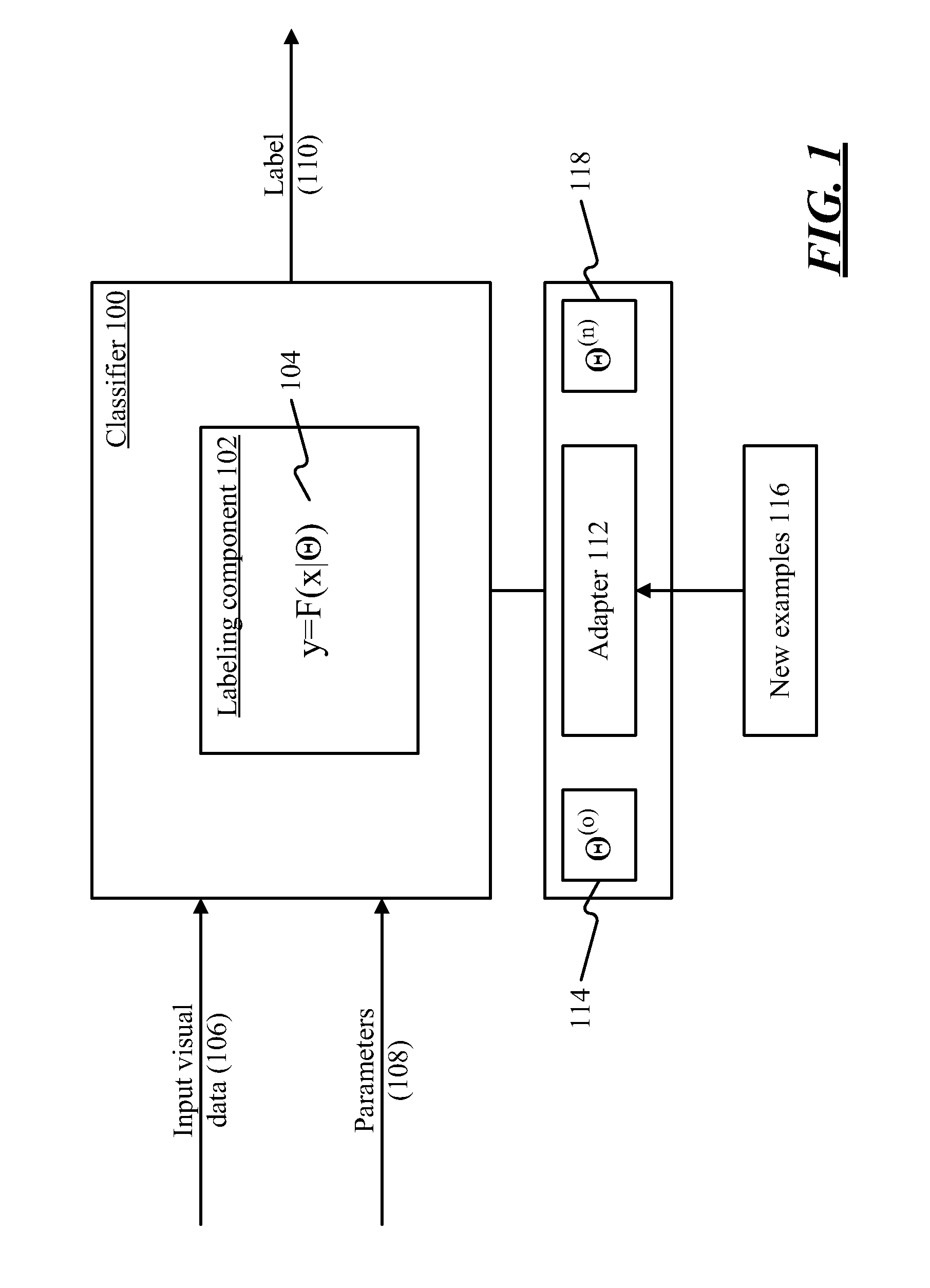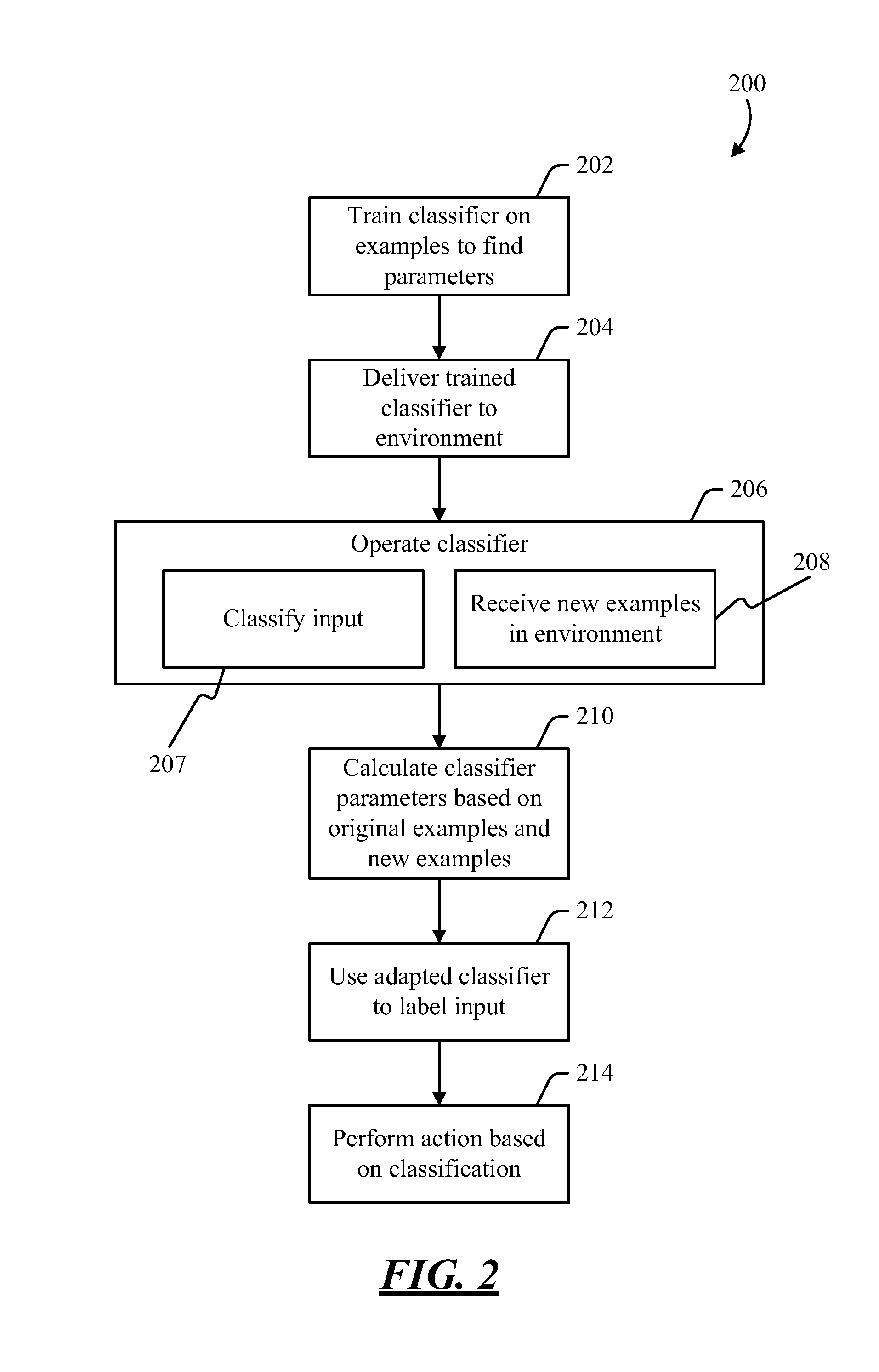Adapting a parameterized classifier to an environment
a parameterized classifier and environment technology, applied in the field of adaptation of parameterized classifiers to environments, can solve the problems of large computational bandwidth involved in training a classifier over a large example set, inability to adapt the classifier after deployment, and inability to perform as well for a classifier trained on generic examples
- Summary
- Abstract
- Description
- Claims
- Application Information
AI Technical Summary
Problems solved by technology
Method used
Image
Examples
Embodiment Construction
[0012]Pattern classification may be used to recognize objects. A classifier is a component that recognizes objects in an image and applies labels to the image or to parts thereof. For example, if a particular part of the image is a person, a face, a dog, a potted plant, or any other type of recognizable object, the classifier attempts to discern what the object is, and applies a label. The label chosen by the classifier may be used as input to any application that responds to visual input as a stimulus. Machine vision is one example of an application that may make use of the labels provided by a classifier, although various types of applications could make use of this information. In general, any type of content item—image, audio, handwriting, etc.—could be subject to a classification process.
[0013]A classifier may implement a mapping, or labeling, function, which takes an image as input and provides a label as output. The labeling function may be parameterized, so that the function...
PUM
 Login to View More
Login to View More Abstract
Description
Claims
Application Information
 Login to View More
Login to View More - R&D
- Intellectual Property
- Life Sciences
- Materials
- Tech Scout
- Unparalleled Data Quality
- Higher Quality Content
- 60% Fewer Hallucinations
Browse by: Latest US Patents, China's latest patents, Technical Efficacy Thesaurus, Application Domain, Technology Topic, Popular Technical Reports.
© 2025 PatSnap. All rights reserved.Legal|Privacy policy|Modern Slavery Act Transparency Statement|Sitemap|About US| Contact US: help@patsnap.com



